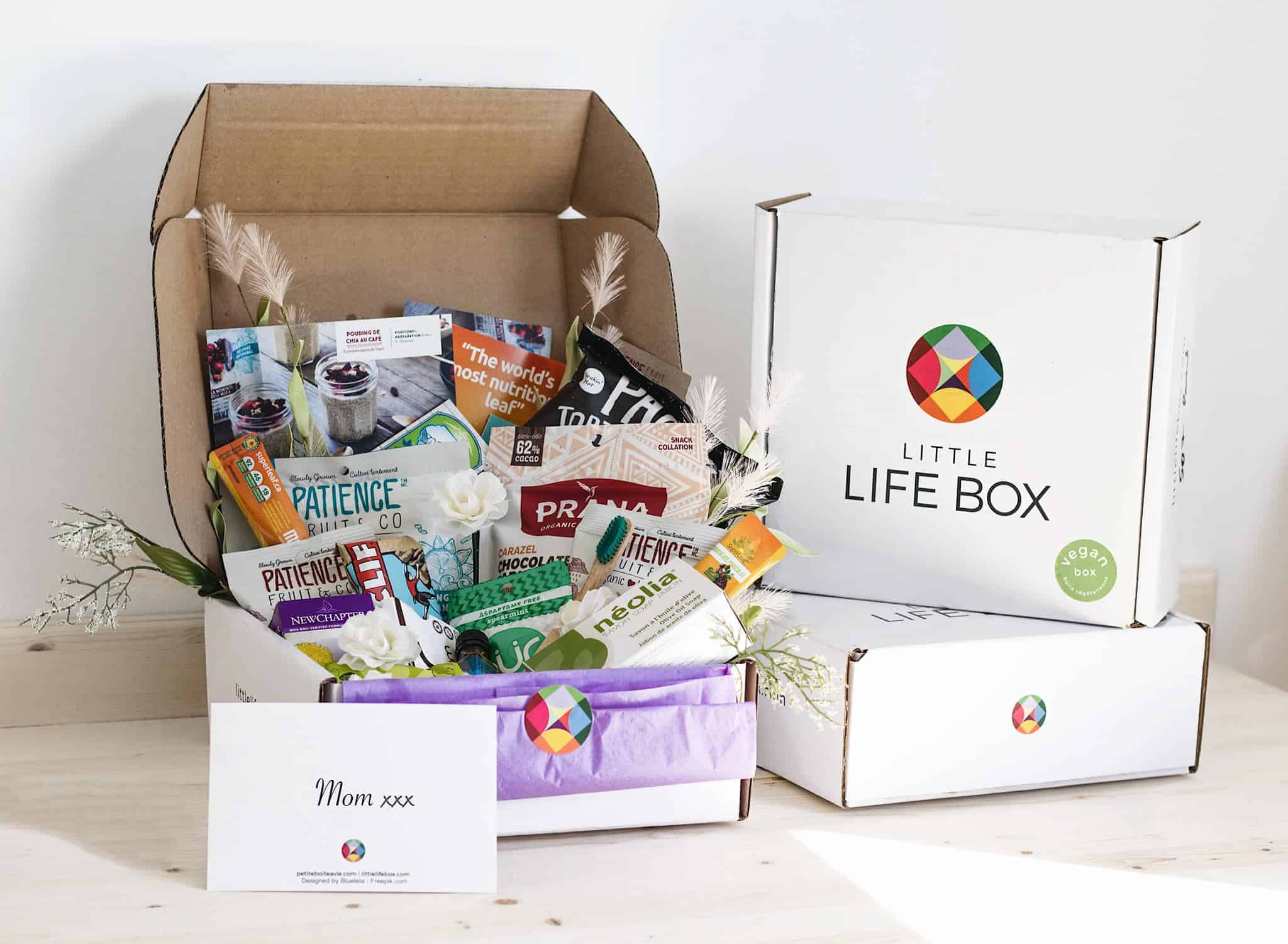In the realm of e-commerce, popular monthly boxes have emerged as a captivating phenomenon, offering a unique blend of convenience, discovery, and delight. These curated subscription boxes cater to diverse interests, from hobbies to beauty to gourmet treats, enticing subscribers with their tailored content and exclusive offerings.
The popularity of monthly boxes has skyrocketed in recent years, driven by factors such as the growing demand for personalized experiences, the convenience of home delivery, and the allure of discovering new products. This industry has experienced significant growth, with a market size estimated in the billions and a loyal customer base that continues to expand.
Popularity Analysis
The monthly box industry has experienced tremendous growth in recent years due to a confluence of factors, including the rise of e-commerce, the proliferation of social media, and the increasing demand for personalized and curated experiences.
According to a study by McKinsey & Company, the global monthly box market was valued at approximately USD 2.6 billion in 2020 and is projected to reach USD 5.7 billion by 2025, representing a compound annual growth rate (CAGR) of 15.5%.
Target Audience
Monthly boxes cater to a diverse range of target audiences, each with unique motivations for subscribing.
- Convenience:Monthly boxes offer a convenient way for consumers to receive products they need or desire without having to leave their homes or spend time researching and comparing options.
- Personalization:Many monthly boxes allow subscribers to customize their boxes based on their preferences, ensuring they receive products that align with their interests and needs.
- Discovery:Monthly boxes provide subscribers with an opportunity to discover new products and brands they may not have otherwise encountered.
- Value:Some monthly boxes offer a cost-effective way for consumers to access premium or niche products that may be more expensive to purchase individually.
- Community:Certain monthly boxes foster a sense of community among subscribers, providing opportunities for interaction and engagement through online forums or social media groups.
Types of Monthly Boxes: Popular Monthly Boxes

Monthly subscription boxes have gained immense popularity, offering a wide range of options tailored to diverse interests and needs. These boxes provide a convenient way to discover new products, support small businesses, and enjoy a curated selection of items delivered right to your doorstep.
To help you navigate the vast array of monthly boxes available, we have compiled a comprehensive list organized into various categories, including hobbies, food, beauty, and more. Each category features examples of popular boxes to provide a glimpse into the diverse offerings.
Hobby Boxes
Hobby boxes cater to specific interests and hobbies, providing a regular supply of materials and inspiration to fuel your passions. Some popular hobby boxes include:
- Cratejoy’s Craft Subscription Box:Offers a wide range of craft-related boxes, from knitting and crocheting to painting and jewelry making.
- KiwiCo’s Tinker Crate:Designed for kids and teens, this box delivers science and engineering projects, fostering creativity and problem-solving skills.
- Book of the Month Club:A classic subscription box that delivers a curated selection of books tailored to your reading preferences.
Subscription Models
Monthly box companies employ various subscription models to cater to different customer preferences and business strategies. Each model offers unique advantages and drawbacks, which companies must carefully consider to optimize customer retention and revenue generation.
Fixed Subscription
In this model, customers pay a fixed monthly fee to receive a curated box of products tailored to their interests or needs. Advantages include:
- Predictable revenue stream for companies
- Reduced risk of customer churn due to consistent value delivery
- Easier inventory management and planning
Disadvantages include:
- Less flexibility for customers to customize their boxes
- Potential for customer dissatisfaction if the box contents do not meet expectations
- Higher risk of inventory waste if boxes are not fully sold
Flexible Subscription
This model allows customers to choose the frequency of their deliveries, customize the contents of their boxes, and skip or cancel their subscriptions at any time. Advantages include:
- Increased customer satisfaction due to personalized experiences
- Reduced customer churn by providing flexibility and control
- Opportunity for companies to offer premium or exclusive products to loyal customers
Disadvantages include:
- More complex inventory management and logistics
- Lower predictability of revenue due to variable subscription patterns
- Potential for increased customer service inquiries
Hybrid Subscription
This model combines elements of both fixed and flexible subscriptions. Customers may have the option to choose a fixed monthly plan with occasional customization options, or a flexible plan with a minimum commitment period. Advantages include:
- Balances the advantages of both fixed and flexible models
- Provides customers with some flexibility while maintaining a level of predictability for companies
- Allows companies to offer a wider range of subscription options
Disadvantages include:
- Can be more complex to manage than a single subscription model
- May require additional customer support to explain the different options
- Potential for customer confusion if the subscription options are not clearly communicated
Optimizing Subscription Models for Customer Retention
Companies can optimize their subscription models for customer retention by:
- Understanding customer preferences and tailoring boxes accordingly
- Offering personalized subscription options to increase customer satisfaction
- Providing excellent customer service and addressing any issues promptly
- Monitoring customer feedback and making adjustments to the subscription model as needed
- Incentivizing long-term subscriptions through loyalty programs or exclusive perks
By carefully considering the different subscription models and optimizing them for customer retention, monthly box companies can increase their revenue, reduce churn, and build a loyal customer base.
Content Curation
Content curation is the heart of any monthly box. It involves the strategic selection and arrangement of products to create a cohesive and engaging experience for subscribers. Monthly box companies employ various strategies to curate their boxes, ensuring that each box aligns with their brand identity and target audience.
One key aspect of content curation is product identification and selection. Companies conduct thorough research to identify products that meet their criteria, such as quality, relevance, and uniqueness. They may collaborate with artisans, small businesses, and niche brands to source exclusive items that resonate with their subscribers.
Personalization and Customization
Personalization and customization play a crucial role in content curation. Companies gather subscriber data, such as preferences, interests, and demographics, to tailor the contents of each box. This allows them to provide subscribers with products that are specifically relevant to their individual tastes and needs.
Some companies offer subscription options that allow subscribers to customize their boxes, choosing from a curated selection of products that align with their preferences.
Packaging and Presentation

Packaging and presentation play a vital role in the overall customer experience of monthly subscription boxes. They not only protect the contents during shipping but also create a sense of anticipation and excitement for the recipient.
The table below compares the packaging and presentation of different monthly boxes, highlighting the materials used, design aesthetics, and overall unboxing experience.
Materials Used
- Cardboard: Durable and environmentally friendly, cardboard is a popular choice for monthly box packaging.
- Corrugated cardboard: Provides extra protection for fragile items.
- Plastic: Lightweight and moisture-resistant, plastic is often used for smaller items.
li>Kraft paper: Sustainable and biodegradable, kraft paper is an eco-friendly option.
Design Aesthetics
- Minimalist: Clean and simple designs with limited branding.
- Themed: Designs that match the box’s theme or contents.
- Colorful: Boxes with vibrant colors and patterns.
- Customizable: Boxes that allow customers to personalize the design.
Overall Unboxing Experience
The unboxing experience should be enjoyable and memorable for the recipient. Factors that contribute to a positive unboxing experience include:
- Ease of opening: Boxes that are easy to open without damaging the contents.
- Presentation: Well-organized and visually appealing arrangement of items.
- Personalization: Boxes that include personalized touches, such as a handwritten note.
- Surprise element: Boxes that contain unexpected or hidden items.
Impact on Customer Satisfaction
High-quality packaging and presentation can significantly impact customer satisfaction. Customers are more likely to be satisfied with their subscription boxes if they perceive the packaging as being durable, attractive, and easy to use. Positive unboxing experiences can also lead to increased brand loyalty and positive word-of-mouth.
Customer Experience
Building a positive customer experience is crucial for the success of monthly box businesses. Companies should focus on delivering exceptional service at every touchpoint to foster subscriber loyalty and drive repeat purchases.
To achieve this, companies can:
Building Strong Relationships, Popular monthly boxes
- Personalize the experience by addressing subscribers by name and tailoring recommendations based on their preferences.
- Provide excellent customer support through multiple channels, including email, phone, and social media.
- Foster a sense of community among subscribers through online forums, social media groups, or exclusive events.
Handling Customer Inquiries, Feedback, and Complaints
- Establish clear processes for handling customer inquiries and complaints, ensuring prompt and effective responses.
- Listen attentively to feedback and use it to improve products and services.
- Resolve complaints professionally and courteously, going above and beyond to ensure customer satisfaction.
Marketing and Promotion

Monthly box companies employ a variety of effective marketing and promotion channels to reach their target audience. These channels include:
Social Media
- Social media platforms such as Facebook, Instagram, and Twitter are used to connect with potential customers, showcase products, and generate buzz.
- Companies create engaging content, run contests and giveaways, and use targeted advertising to increase their visibility.
Email Marketing
- Email marketing is an effective way to nurture leads, promote new products, and drive sales.
- Companies use email campaigns to provide exclusive content, offer discounts, and build relationships with their subscribers.
Influencer Partnerships
- Influencer partnerships involve collaborating with individuals who have a strong following in the target market.
- Companies provide influencers with free products or compensation in exchange for promoting their boxes to their followers.
Content Marketing
- Content marketing involves creating and sharing valuable, relevant, and consistent content to attract and retain a clearly defined audience.
- Monthly box companies use blog posts, videos, and infographics to educate their audience about their products, provide styling tips, and build brand awareness.
Last Point
As the popularity of monthly boxes continues to soar, businesses and consumers alike recognize their immense potential. By understanding the key elements that drive success in this industry, from content curation to customer experience, companies can optimize their offerings to meet the evolving needs of their subscribers.
The future of monthly boxes holds endless possibilities, with new innovations and collaborations emerging to further enhance the unboxing experience.
FAQ Compilation
What factors contribute to the popularity of monthly boxes?
The popularity of monthly boxes can be attributed to factors such as the growing demand for personalized experiences, the convenience of home delivery, and the allure of discovering new products.
What are the different types of monthly boxes available?
Monthly boxes encompass a wide range of categories, including hobbies, food, beauty, and more. Each category offers a diverse selection of boxes, catering to specific interests and preferences.
How do monthly box companies curate their boxes?
Monthly box companies employ strategic approaches to curate their boxes, involving meticulous product selection, personalization based on subscriber preferences, and collaborations with brands to offer exclusive items.